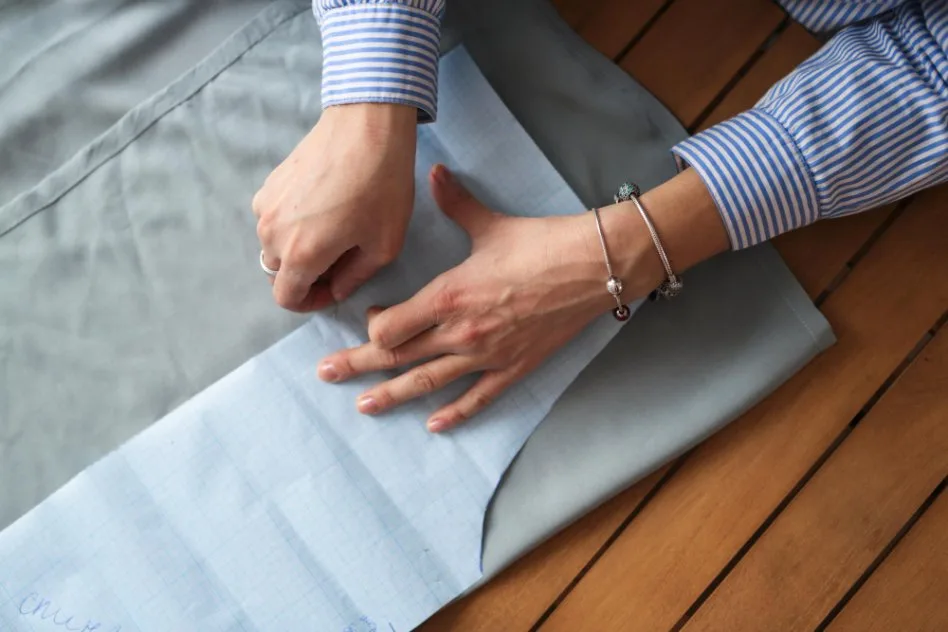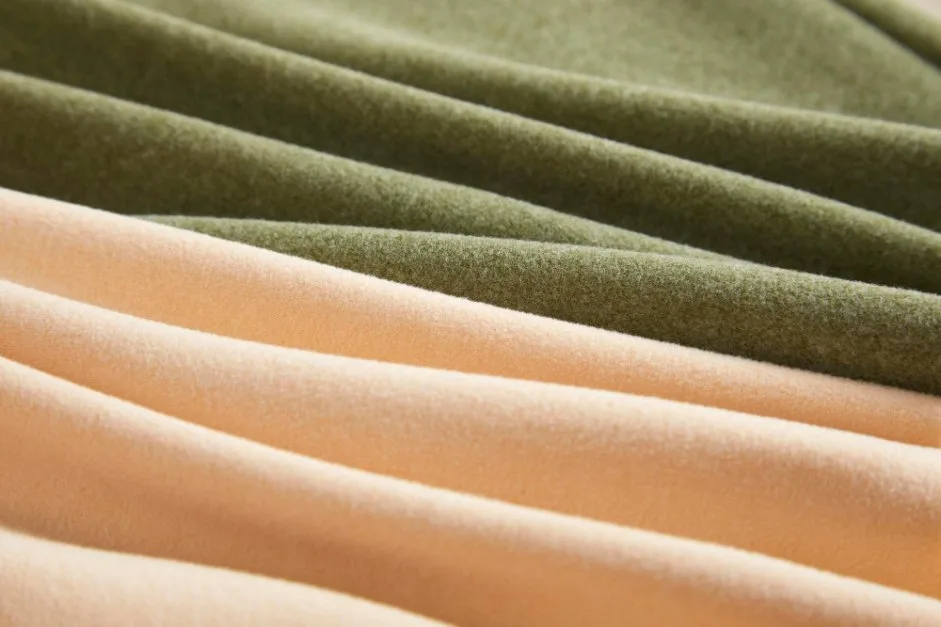Testing Standards, Cost Analysis & Expert Recommendations
Finding the right fabric for everyday clothing can be challenging. You want clothes that last through many washes and daily activities without quickly wearing out. After researching fabric durability standards and testing methods, we’ve identified clear winners that combine longevity with comfort.
Cotton, wool, and hemp offer excellent durability for everyday clothing. Cotton withstands approximately 100 washes compared to linen’s 50, making it practical for daily wear. However, synthetic fabrics can last 500+ wash cycles. The weave pattern matters just as much as the fiber type. Fabrics with twill, canvas, and ripstop weaves provide extra reinforcement that helps clothes maintain their shape and resist tears.
When choosing durable clothes, consider both the material and construction. The most hardwearing options combine quality fibers with strong weave patterns. Some fabrics receive special treatments that resist stains and water damage, extending their lifespan and keeping them looking fresh through years of regular use.
Table of Contents
Key Takeaways
- Testing Standards Matter: Look for fabrics tested under ASTM D5034 (tensile strength) and ASTM D2261 (tear resistance) standards
- Weave Patterns Impact Durability: Twill, canvas, and ripstop weaves significantly improve fabric strength regardless of fiber content
- Cost-Per-Wear Analysis: Investing in durable fabrics saves money long-term despite higher upfront costs
- Calculate Your Fabric Investment: Use our fabric durability calculator to determine expected lifespan and cost-per-wear for any fabric choice
- Proper Care Extends Lifespan: Following fabric care guidelines dramatically increases clothing longevity
Understanding Fabric Durability and Testing Standards
When choosing clothes that last, understanding what makes fabrics strong is crucial. Durability involves several measurable factors that determine how well a fabric stands up to daily wear.
Defining Durability in Textiles
Fabric durability refers to how well a material withstands wear, pressure, and damage over time. Modern textile testing evaluates resistance to tearing, pilling, fading, and general wear and tear using standardized methods.
The fabric industry uses specific testing standards to measure durability according to ASTM International, the leading organization for materials testing standards. These standardized methods ensure consistent quality assessment across manufacturers and help consumers make informed choices about fabric performance.
- ASTM D5034: Measures breaking strength and elongation
- ASTM D2261: Tests tear resistance (minimum 50 lbs for upholstery, 100+ lbs for heavy-duty applications)
- ASTM D3884: Evaluates abrasion resistance through cycle testing
- ASTM D3776: Determines fabric weight and density
These standards ensure consistent quality assessment across manufacturers and help consumers make informed choices about fabric performance.
Fabric Durability Comparison Chart
| Fabric Type | Wash Cycles | Tensile Strength | Tear Resistance | Expected Lifespan | Cost Rating |
|---|---|---|---|---|---|
| Cotton (100%) | 100-150 | Moderate | 50-75 lbs | 2-3 years | $ |
| Polyester (100%) | 500+ | High | 75-100 lbs | 5-8 years | $ |
| Nylon | 400+ | Very High | 100-125 lbs | 6-10 years | $$ |
| Wool | 75-100 | High | 60-80 lbs | 5-15 years | $$$ |
| Hemp | 200+ | Very High | 80-120 lbs | 8-12 years | $$ |
| Cotton-Polyester Blend | 300+ | High | 70-90 lbs | 4-6 years | $ |
| Ballistic Nylon | 800+ | Extreme | 150+ lbs | 15+ years | $$$$ |
Factors Affecting Fabric Longevity
Several elements impact how long a fabric will last. Fiber strength creates the foundation, but weave pattern significantly affects durability. Twill weaves (found in denim) and canvas weaves provide excellent strength compared to plain weaves.
Fabric thickness matters, but construction quality trumps weight. A thinner fabric with strong fibers and tight weave can outlast a thicker, poorly constructed material.
Environmental factors like sun exposure, humidity, and temperature fluctuations break down fibers over time. Even the most durable fabrics need protection from harsh conditions.
Natural Fibers for Durability

Natural fibers offer excellent durability while being gentle on both skin and environment. These materials combine strength, comfort, and sustainability in ways synthetic fabrics cannot match.
Cotton: The Everyday Champion
Cotton stands as one of the most widely used natural fibers for everyday clothing. Its breathability allows air circulation, keeping your body comfortable in various temperatures.
Cotton’s durability comes from naturally strong fibers that withstand repeated washing and wear. The fabric actually becomes softer over time without losing structural integrity.
For maximum durability, look for long-staple cotton varieties like Pima or Egyptian cotton. These premium options feature longer fibers that create stronger, more resilient fabrics.
Cotton versatility allows different weights and textures. Heavy cotton twill or canvas can withstand years of use, making them excellent choices for workwear and everyday items like jeans and jackets.
Which fabric is the most durable? For natural options, hemp takes the top spot with three times cotton’s strength. For synthetic materials, ballistic nylon offers the highest durability rating.
Wool’s Resilience and Insulating Properties
Wool offers exceptional durability that few other fibers match. Its natural crimped structure allows wool fibers to stretch up to 30% beyond their original length without breaking.
Merino wool stands out as particularly versatile. This finer wool variety combines durability with softness, eliminating itchiness often associated with wool garments. Merino wool items can last for years with proper wool care.
Wool’s natural elasticity helps garments maintain their shape. The fibers can bend up to 20,000 times without damage, while cotton fibers might break after just 3,000 bends.
The natural water resistance of wool adds to its durability. The outer layer repels moisture while the fiber core can absorb up to 30% of its weight without feeling wet.
Hemp: The Strength Champion
Hemp stands among the strongest natural fibers available. Items made from hemp can last three times longer than those made from cotton, making it an excellent choice for everyday wear.
What is the toughest fabric in the world? While spider silk holds the technical title, hemp ranks as the most practical tough natural fiber for clothing applications.
The plant grows quickly with minimal water and no pesticides, making hemp incredibly sustainable. Hemp fabrics maintain their integrity even after countless wash cycles.
Hemp fibers are naturally antimicrobial and resistant to mold and UV damage. These properties help hemp clothing maintain appearance and structural integrity over time.
Modern processing methods have improved hemp’s texture significantly. Today’s hemp fabrics can be quite soft while maintaining exceptional durability. The material breathes well and becomes more comfortable with each wear and wash.
For everyday wear, hemp-cotton blends offer an ideal balance, combining hemp’s strength with cotton’s immediate comfort.
Linen: Surprisingly Strong
Linen boasts impressive tensile strength and actually becomes stronger when wet, unlike many other fabrics. This makes linen exceptionally durable and able to withstand frequent washing.
Linen naturally resists abrasion and pilling. While it wrinkles easily, properly cared for linen items can last for decades, often becoming softer and more comfortable with age following proper linen care.
The natural fibers come from the flax plant’s stalks. These long fibers create a fabric that’s both strong and lightweight. Linen breathes exceptionally well, making it perfect for hot weather wear.
Synthetic and Semi-Synthetic Powerhouses
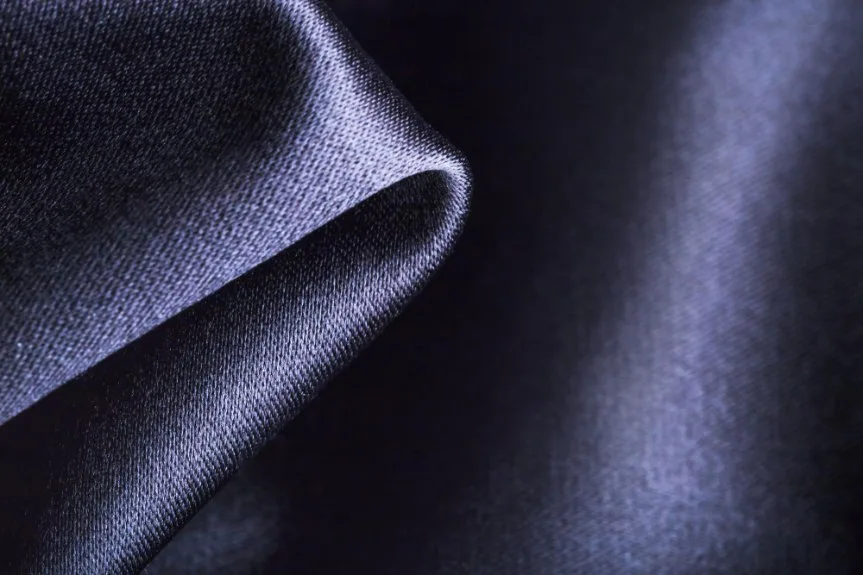
Synthetic fabrics offer exceptional durability for everyday wear. These manufactured materials combine strength, flexibility, and easy care properties that make them practical for busy lifestyles.
Polyester: The Workhorse
Polyester is one of the most versatile synthetic fabrics available today. It resists wrinkles, maintains shape, and stands up to frequent washing without fading.
Recycled polyester deserves special mention. It offers the same durability as traditional polyester but with a smaller environmental footprint. Many brands now use recycled plastic bottles to create high-quality polyester fabrics.
Key polyester advantages:
- Exceptional durability – withstands years of wear
- Wrinkle resistance – stays neat-looking throughout the day
- Color retention – maintains vibrant appearance after multiple washes
- Quick-drying – practical for active lifestyles
Polyester vs cotton comparisons show polyester lasting significantly longer, though cotton offers superior breathability.
Nylon: Strength and Flexibility Champion
Nylon stands out for its remarkable strength-to-weight ratio. This synthetic fiber can withstand significant stress without tearing, making it ideal for activewear and outdoor clothing.
What fabric has the highest tensile strength? Nylon leads among common clothing fabrics, with specialty versions like ballistic nylon reaching extreme strength levels.
Nylon’s inherent flexibility allows comfortable movement without fabric restriction. It’s lightweight yet incredibly strong, perfect for items that need to endure stretching and bending.
Nylon also excels in moisture management. It wicks away sweat and dries quickly, making it suitable for athletic clothing. Many performance garments incorporate nylon for its durability in high-friction areas.
Common nylon applications:
- Backpacks and luggage
- Athletic wear
- Swimwear
- Windbreakers and jackets
- Stockings and hosiery
Water resistance is another benefit, as nylon naturally repels moisture better than most natural fibers.
Advanced Synthetic Technologies
Ballistic Nylon: Originally developed for military flak jackets, this heavyweight nylon fabric offers extreme durability. It features high-strength fibers woven in tight patterns, providing tear resistance of 150+ pounds.
Cordura Nylon: This specialized nylon fabric offers military-grade durability while remaining lighter than ballistic nylon. It’s commonly used in outdoor gear and professional equipment.
Ripstop Technology: Features reinforced grid patterns that prevent small tears from spreading. This weave pattern significantly extends fabric life by containing damage.
Advanced Fabric Technologies and Specialized Features
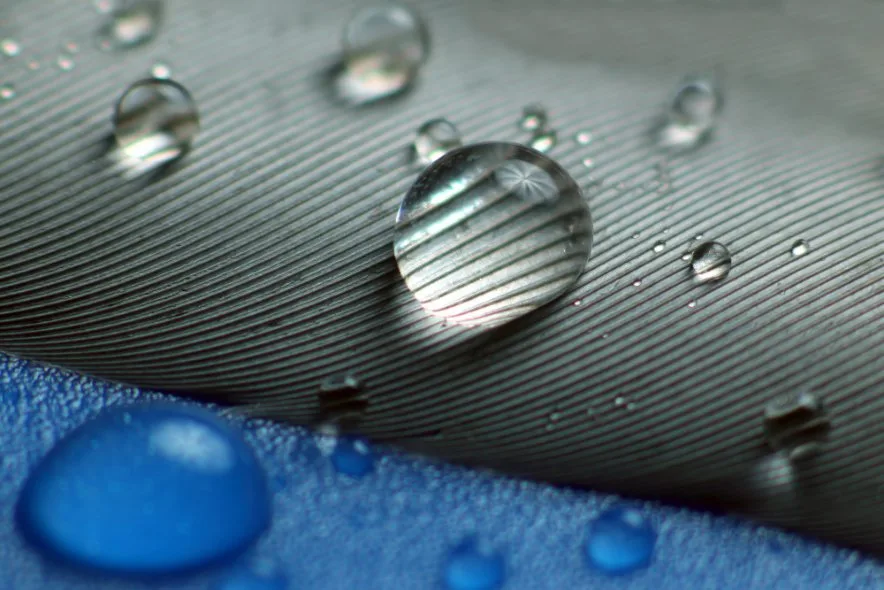
Modern fabrics combine durability with special features that make clothes more comfortable and functional for everyday wear.
Moisture-Wicking Technologies
Moisture-wicking fabrics pull sweat away from skin to the outer surface where it can evaporate quickly. This technology has moved from activewear into everyday clothing.
Natural fibers like merino wool have built-in moisture-wicking properties. Merino wool can absorb up to 30% of its weight in moisture while still feeling dry against skin.
Synthetic fabrics like polyester receive special treatments to enhance wicking abilities. These treatments create tiny channels in the fabric that draw moisture outward.
Water-Resistant Technologies
Modern water-resistant fabrics use advanced treatments that repel moisture while maintaining breathability. DWR coatings provide surface protection without compromising fabric flexibility.
Understanding the difference between water-resistant vs waterproof fabrics helps in selecting appropriate materials for different conditions.
Fire-Resistant Fabrics
Fire-resistant fabrics provide additional safety for specific applications. These materials self-extinguish when removed from flame sources, offering protection in hazardous environments.
Fabric Weave and Construction Patterns
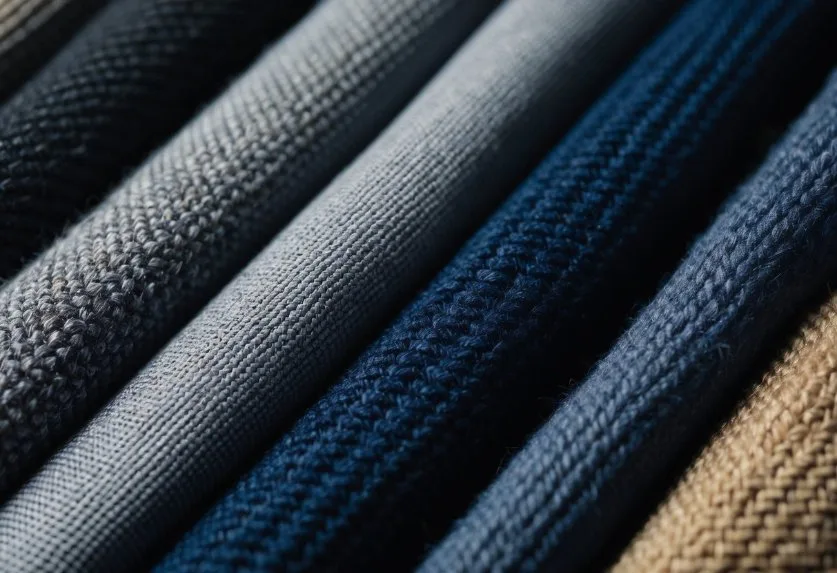
The structure of fabric plays a crucial role in determining durability. Both weave and knit patterns affect how fabric performs during daily wear, creating different levels of strength, stretch, and breathability.
Understanding Weave Varieties
Woven fabrics are created by interlacing threads at right angles. The tightness of the weave directly impacts durability – tighter weaves generally mean stronger fabric.
Canvas and Denim: Feature dense, tight weaves that resist tearing and abrasion. Twill weaves (like those in denim) create diagonal lines that add strength while maintaining flexibility.
Plain Weaves: Offer balanced strength in both directions. For maximum durability, look for:
- High thread count
- Tight, uniform weave pattern
- Minimal visible gaps between threads
- Double or triple weaves for reinforced strength
What fabric doesn’t rip? Ballistic nylon with ripstop weave construction offers the highest tear resistance, followed by heavy canvas and quality denim.
Knits for Stretch and Breathability
Knit fabrics form through interlocking loops of yarn, creating natural stretch and flexibility. The structure makes them inherently breathable and comfortable for everyday wear.
Jersey knits offer excellent durability combined with softness and elasticity. Double knits provide superior strength while maintaining comfort. For active wear, interlock knits resist pilling and maintain shape after repeated washing.
Key benefits of durable knit fabrics:
- Natural stretch without elastic fibers
- Resistance to wrinkling
- Excellent breathability
- Ability to conform to body movements
Environmental and Ethical Considerations
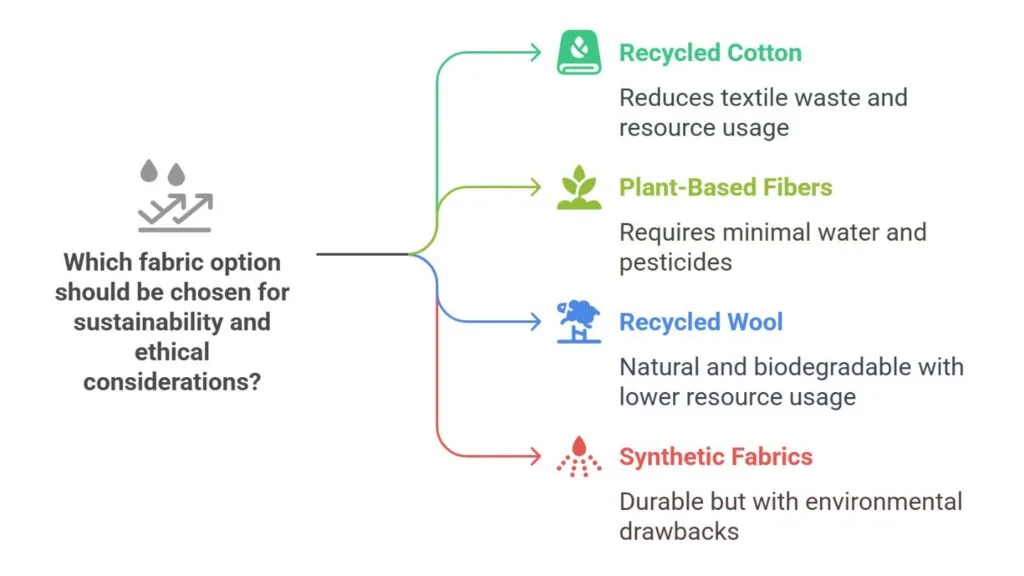
When choosing durable fabrics, considering environmental impact becomes increasingly important. The fashion industry has significant environmental effects, but several options exist for more sustainable choices.
Sustainable Fabric Options
Recycled cotton prevents additional textile waste and uses fewer resources than conventional cotton. Plant-based fibers like hemp, flax, and jute rank among the most eco-friendly choices since they require minimal water and pesticides to grow.
Wool presents an interesting case. While natural and biodegradable, traditional wool production raises animal welfare concerns. Recycled wool offers a better alternative with lower resource usage.
Synthetic fabric care becomes important because these materials, while durable, come with environmental drawbacks. They’re petroleum-based and release microplastics when washed.
Certifications for Quality Assurance
Understanding fabric certifications helps make informed choices:
- Bluesign Certification: Ensures textiles are produced with minimal impact on people and environment
- GOTS (Global Organic Textile Standard): Certifies organic status and responsible manufacturing
- Cradle to Cradle: Evaluates products for environmental safety and design for future lifecycles
- OEKO-TEX Standard 100: Focuses on harmful substances testing
Cost-Per-Wear Analysis: Investment vs. Value
Understanding the true cost of fabric choices requires looking beyond initial purchase price to long-term value.
Before making fabric investment decisions, calculate the true value using our fabric durability calculator. This tool helps determine expected lifespan, total cost of ownership, and cost-per-wear for different fabric types based on your specific usage patterns.
Initial Cost vs. Long-Term Value
| Fabric Type | Initial Cost | Expected Lifespan | Cost Per Year | Best Value Rating |
|---|---|---|---|---|
| Fast Fashion Cotton | $20 | 6 months | $40 | Poor |
| Quality Cotton | $50 | 3 years | $17 | Good |
| Cotton-Polyester Blend | $40 | 5 years | $8 | Excellent |
| Premium Wool | $150 | 10 years | $15 | Very Good |
| Quality Nylon | $80 | 8 years | $10 | Excellent |
| Hemp Blend | $60 | 6 years | $10 | Excellent |
Factors Affecting Total Cost of Ownership
Cleaning Costs: Delicate fabrics requiring dry cleaning add $5-15 per cleaning cycle. Machine-washable fabrics save significantly over time.
Replacement Frequency: Higher quality fabrics reduce replacement costs. A $100 garment lasting 5 years costs less than five $30 garments lasting 1 year each.
Maintenance Requirements: Some fabrics need special care products or treatments, adding to total ownership costs.
Climate-Specific Fabric Recommendations
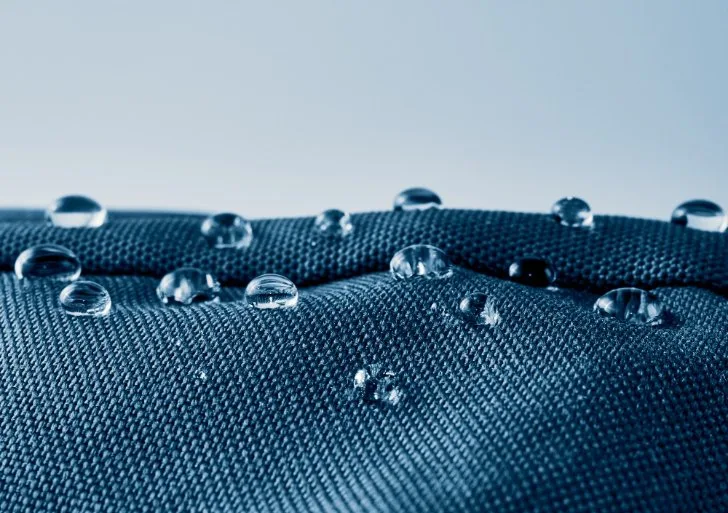
Hot Climate Performance
Which fabric is best for extreme summer? Linen leads for natural fibers due to exceptional breathability and moisture management. For synthetic options, moisture-wicking polyester blends offer superior performance.
Best summer fabrics ranked:
- Linen – Maximum breathability
- Lightweight cotton – Good airflow
- Moisture-wicking polyester – Quick-drying
- Bamboo blends – Naturally cooling
- Hemp – Breathable and antimicrobial
Cold Weather Durability
Wool excels in cold conditions due to natural insulation properties and moisture resistance. Merino wool provides warmth without bulk while maintaining durability.
Humid Environment Resistance
Synthetic fabrics perform better in high humidity due to quick-drying properties and mold resistance. Nylon and polyester maintain structural integrity better than natural fibers in consistently damp conditions.
Fabric Care and Maintenance for Maximum Lifespan
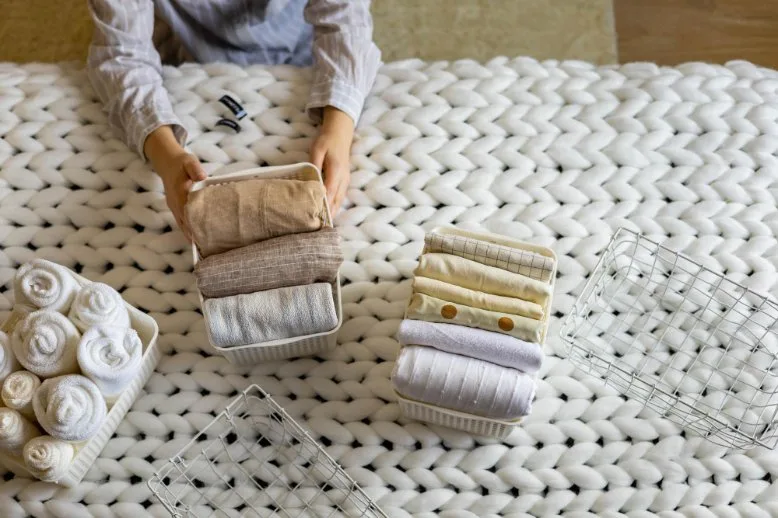
Even the most durable fabrics need proper care to maintain quality and extend lifespan. Taking time to properly clean and maintain garments significantly impacts how long they remain in your wardrobe.
Effective Cleaning Techniques by Fabric Type
Cotton Care: Wash in cold water with mild detergent. Hot water causes shrinkage and fiber damage. Air dry when possible to prevent heat damage. Follow cotton care guidelines for best results.
Synthetic Fabric Care: Use lower heat settings during washing and drying. Turn garments inside out before washing to prevent visible wear. Avoid fabric softeners with moisture-wicking fabrics.
Wool Maintenance: Hand wash or use gentle machine cycles with wool-specific detergent. Never wring or twist wet wool. Lay flat to dry to maintain shape.
Professional vs. Home Care
Some fabrics benefit from professional cleaning despite higher costs:
- Dry Clean Only: Delicate wools, silk blends, structured garments
- Professional Worth It: High-end wool coats, tailored suits, specialty athletic wear
- Home Care Sufficient: Cotton, polyester, nylon, casual wear
Repair and Maintenance Tips
Address small issues immediately before they become major problems:
- Darn Small Holes: Prevents enlargement and extends garment life
- Reinforce Stress Points: Add interfacing to high-wear areas
- Replace Hardware: Buttons, zippers before they fail completely
- Proper Storage: Use appropriate hangers, fold knits, protect from moths
Apparel Applications and Specific Recommendations
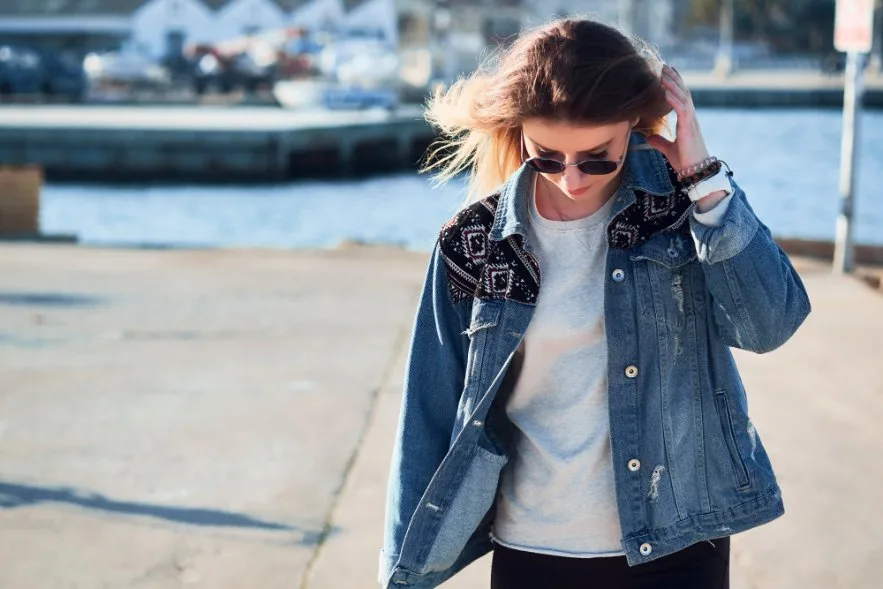
Choosing the right fabric for specific clothing items makes a significant difference in durability and comfort.
Pants: Function Meets Durability
What clothing brand lasts the longest? While brand loyalty varies, look for companies using quality fabrics and construction methods rather than focusing solely on brand names.
Durable pants fabric recommendations:
- Cotton Twill: Excellent for casual wear, balances durability and comfort
- Cotton-Polyester Blends: Best of both worlds – natural comfort with synthetic strength
- Denim with Stretch: Modern stretch denim with small spandex percentage offers durability and flexibility
- Nylon Ripstop: For outdoor activities requiring maximum tear resistance
Tops and Shirts
Which fabric is very durable but very soft? Merino wool leads this category, offering exceptional softness while maintaining strength. High-quality modal and bamboo blends also provide this combination.
Best fabric choices for tops:
- Cotton Jersey: Comfortable and durable for everyday wear
- Polyester Blends: Wrinkle-resistant and long-lasting
- Merino Wool: Premium option for all-season comfort
- Bamboo Blends: Soft, breathable, and naturally antimicrobial
Outerwear Selection
What is the hardest fabric to tear? Ballistic nylon claims this title, followed by Cordura nylon and heavy canvas. These fabrics excel in outerwear applications.
For outerwear durability, consider:
- Weather Resistance: Look for water-repellent technology
- Wind Resistance: Tightly woven fabrics perform better
- Abrasion Resistance: Important for active outdoor use
- UV Protection: Essential for extended sun exposure
Performance Testing and Quality Standards
Understanding how fabrics are tested helps in making informed choices about durability and performance.
Industry Testing Standards
Professional textile evaluation follows standardized methods developed by the American Association of Textile Chemists and Colorists (AATCC) and ASTM International. AATCC focuses on chemical processing, colorfastness, and appearance retention, while ASTM emphasizes physical properties and mechanical performance.
ASTM Testing Methods:
- ASTM D5034: Grab test for breaking strength and elongation
- ASTM D2261: Tongue tear test for tear resistance
- ASTM D3884: Rotary platform abrasion test
- ASTM D1230: Flammability testing for clothing textiles
ISO International Standards: Global textile quality follows ISO international standards that ensure consistent testing methods across manufacturers worldwide, facilitating international trade and quality assurance:
- ISO 13934-1: Tensile properties determination
- ISO 13937: Tear resistance testing
- ISO 12947: Martindale abrasion resistance
Reading Fabric Specifications
When evaluating fabric quality, look for these specifications:
Tensile Strength: Measured in pounds or Newtons, indicates breaking force Tear Resistance: Minimum force required to propagate a tear Abrasion Cycles: Number of rubs before visible wear appears Pilling Resistance: Rating scale from 1 (severe pilling) to 5 (no pilling)
Specialty Fabrics and Advanced Materials
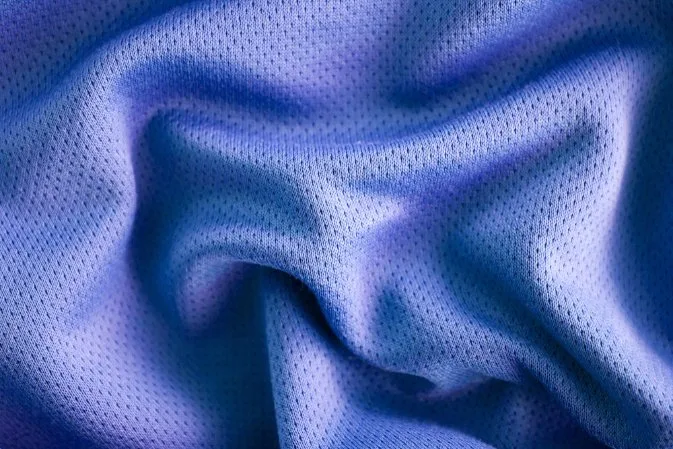
High-Performance Options
What is the lightest but strongest material in the world? Spider silk holds this record naturally, but for practical applications, ultra-high molecular weight polyethylene (UHMWPE) offers exceptional strength-to-weight ratios.
Specialty fabric applications:
- UHMWPE: Cut-resistant gloves, protective clothing
- Carbon Fiber Fabrics: Lightweight, extremely strong for technical applications
- Kevlar: Bulletproof vests, protective gear
- Nomex: Fire-resistant clothing for firefighters and racing
Fabric Blends for Optimal Performance
What fabric has high strength and resilient material? Nylon-cotton blends combine nylon’s strength with cotton’s comfort. Polyester-wool blends offer durability with natural properties.
Popular high-performance blends:
- Cotton-Polyester (60/40): Balanced comfort and durability
- Nylon-Spandex: Stretch and recovery for activewear
- Wool-Polyester: Warmth with easy care
- Hemp-Cotton: Strength with softness
Troubleshooting Common Fabric Issues
Identifying Quality Problems
What fabric should you stay away from? Avoid:
- Very low-cost polyester (pills easily, poor drape)
- Untreated cotton in harsh environments (shrinks, fades quickly)
- Acrylic for sensitive skin (can cause irritation)
- Rayon for heavy-duty use (weak when wet)
Fabric Selection Red Flags
Watch for these warning signs when shopping:
- Extremely low prices compared to similar items
- Fabric feels stiff or scratchy
- Poor drape or hang
- Visible loose threads or uneven weaving
- Strong chemical odors
When evaluating fabric choices, use our durability calculator to compare the long-term value of different options. Input the fabric type, intended use, and purchase price to get personalized recommendations on whether a garment represents good value for your specific needs.
Future Trends and Innovations
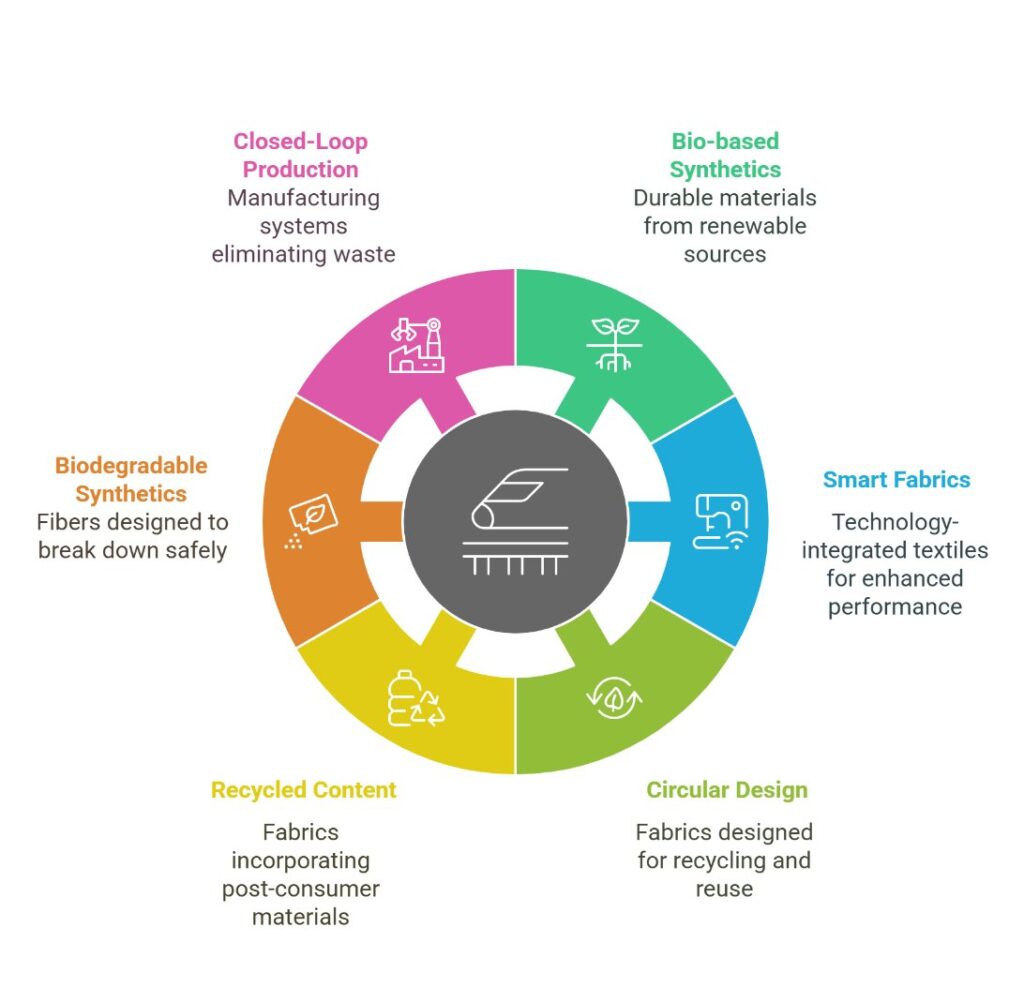
Emerging Technologies
The textile industry continues developing new materials that combine traditional durability with modern performance features:
- Bio-based Synthetics: Made from renewable sources while maintaining synthetic durability
- Smart Fabrics: Integrate technology for temperature regulation or moisture management
- Circular Design: Fabrics designed for eventual recycling and reuse
Sustainability Advances
- Recycled Content: More fabrics incorporate post-consumer recycled materials
- Biodegradable Synthetics: New synthetic fibers designed to break down safely
- Closed-Loop Production: Manufacturing systems that eliminate waste
Frequently Asked Questions
General Durability Questions
Is there an indestructible fabric?
No truly indestructible fabric exists, but ballistic nylon and ultra-high molecular weight polyethylene come closest for practical applications. These materials resist tearing, abrasion, and environmental damage better than any other fabrics.
What is the most resilient fabric?
Wool ranks highest for natural resilience due to its ability to recover from stretching and compression. For synthetic options, nylon offers the best resilience and elasticity.
What fabric holds up the best?
For everyday wear, cotton-polyester blends offer the best balance of durability, comfort, and care ease. For extreme conditions, ballistic nylon or Cordura provide maximum durability.
Which fabric is known for its durability and strength?
Hemp leads among natural fibers for strength, while nylon dominates synthetic options. Both significantly outperform cotton in tensile strength and tear resistance.
Specific Performance Questions
What is the world’s strongest fabric?
Spider silk holds the technical title, but for commercially available options, ballistic nylon and UHMWPE fabrics offer the highest strength-to-weight ratios.
What is a cheap strong fabric?
Cotton-polyester blends provide excellent strength and durability at affordable prices. Canvas and denim also offer good strength for reasonable costs.
Which fabric is best for the human body?
Natural fibers like cotton, wool, and bamboo are generally best for direct skin contact due to breathability and lack of synthetic chemicals. Merino wool excels for temperature regulation.
What is the softest and strongest fabric?
Merino wool combines exceptional softness with good strength. For synthetic options, high-quality modal blends offer similar characteristics.
Specialty Applications
What is the most delicate fabric in the world?
Silk chiffon and very fine lace rank among the most delicate, requiring careful handling and specialized care.
What is the toughest material known to man?
For textiles, ultra-high molecular weight polyethylene (UHMWPE) used in cut-resistant applications offers extreme toughness. Diamond remains the hardest material overall.
Conclusion
Choosing durable fabrics for everyday wear requires balancing multiple factors including initial cost, expected lifespan, care requirements, and intended use. The research clearly shows that while natural fibers offer comfort and environmental benefits, synthetic materials and blends often provide superior durability and value.
Top Durability Winners by Category
- Natural Fibers: Hemp leads in strength and longevity, followed by wool for resilience and cotton for versatility. Linen offers excellent breathability but requires more careful handling.
- Synthetic Materials: Nylon dominates for pure strength, while polyester excels in easy care and color retention. Specialty synthetics like ballistic nylon provide extreme durability for demanding applications.
- Best Value Options: Cotton-polyester blends consistently deliver the optimal balance of durability, comfort, and affordability for most consumers.
Key Investment Strategies
- Prioritize Quality Construction: Well-made garments using standard fabrics often outlast poorly constructed items made from premium materials. Look for reinforced seams, quality hardware, and proper finishing.
- Consider Total Cost of Ownership: Higher initial costs for quality fabrics typically provide better long-term value through extended lifespan and reduced replacement frequency.
- Match Fabric to Function: Athletic wear benefits from moisture-wicking synthetics, while casual everyday wear performs well with natural fiber blends. Professional clothing often justifies investment in wool or high-quality cotton.
Make Data-Driven Fabric Decisions
Take the guesswork out of fabric selection with our comprehensive fabric durability calculator. Simply input your fabric type, usage frequency, and purchase price to receive:
- Expected garment lifespan in years
- Total cost-per-wear analysis
- Durability rating and value assessment
- Personalized care and investment recommendations
This free tool helps ensure every fabric purchase delivers maximum value for your specific lifestyle and budget.
Care and Maintenance Priorities
Proper care extends any fabric’s lifespan significantly. Following manufacturer guidelines, using appropriate water temperatures, and avoiding harsh chemicals protect fabric integrity. Regular maintenance like prompt stain treatment and proper storage prevent premature wear.
Environmental Considerations
Choosing durable fabrics supports environmental sustainability by reducing consumption frequency. When possible, select recycled content fabrics or sustainably produced natural fibers. Proper care and eventual responsible disposal complete the sustainability cycle.
Future-Proofing Your Wardrobe
Focus on versatile, high-quality pieces that work across seasons and situations. Classic styles in durable fabrics provide better long-term value than trendy items in lower-quality materials. Building a core wardrobe of durable pieces allows for strategic additions of fashion-forward items without sacrificing overall quality.
The textile industry continues advancing, with new technologies improving both durability and sustainability. Stay informed about emerging options while building your wardrobe foundation on proven, reliable materials that meet your specific needs and lifestyle requirements.
By understanding fabric properties, testing standards, and care requirements, you can make informed decisions that provide years of comfortable, durable wear while supporting sustainable consumption practices.

